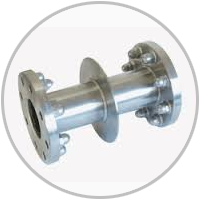ashtree
Bioengineer
- Nov 28, 2015
- 703
We are getting an above ground concrete tank built at one of our wastewater plants to store treated effluent. Its about 50000 USG capacity with a wall height of 9 foot and a wall thickness of about 6 inches.
We have a number of pipes to go through the wall , two four inch and two 10 inch. These will be made of stainless steel.
I assume that these pipe stubs should have what i would call a puddle flange welded on the pipe that is located in the middle of the wall or perhaps bolted on one side of the wall. This prevents a pathway for water to flow between the wall and the pipe as well as positively locating the pipe in the wall.
This is not my area of expertise and the contractor although supposedly very experienced in tank building does not seem to have any preference just saying that we have to provide the pipes and they will install them.
Am i correct in saying that the pipe stubs should have puddle flanges and if so should this be cast into the concrete or bolted onto and sealed on one side of the tank?
Regards
Ashtree
"Any water can be made potable if you filter it through enough money"
We have a number of pipes to go through the wall , two four inch and two 10 inch. These will be made of stainless steel.
I assume that these pipe stubs should have what i would call a puddle flange welded on the pipe that is located in the middle of the wall or perhaps bolted on one side of the wall. This prevents a pathway for water to flow between the wall and the pipe as well as positively locating the pipe in the wall.
This is not my area of expertise and the contractor although supposedly very experienced in tank building does not seem to have any preference just saying that we have to provide the pipes and they will install them.
Am i correct in saying that the pipe stubs should have puddle flanges and if so should this be cast into the concrete or bolted onto and sealed on one side of the tank?
Regards
Ashtree
"Any water can be made potable if you filter it through enough money"

